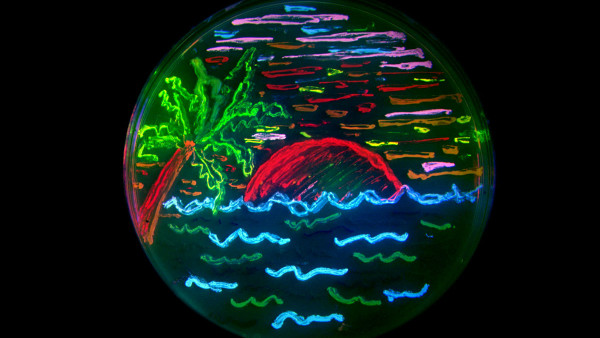7 Mind-Blowing Art And Science Mash Ups
Very cool things happen when artists do science and scientists make art.

In the spectrum of human interests, science and art sit on opposite ends. The view is that science appeals to perception and reason, and art to intuition and emotion. Science is about knowing stuff, art is creating them.
But when you think about it, these seemingly dissonant fields both emerge of from human curiosity, inquisitiveness and imagination.
Scientists and artists are not the strange bedfellows they seem to be. They can even be the same fellow. Take Leonardo da Vinci: Famous for his painting of the lady with the enigmatic smile, he also made great contributions to the study of human anatomy. Brian May of the legendary band Queen is a Doctor of Astrophysics. Then you have the brilliant scientists with an artistic streak. The great Albert Einstein was a lover of music and was a decent violin player. In a past life, physicist and scientist Professor Brian Cox, rocked long hair to play keyboard for a UK pop band D: Ream.
Although science and art interpret the world through different perspectives and processes, one thing they both share is that they switch on a sense of wonder. Appreciating the workings of a black hole can make you feel all warm and fuzzy just as much as listening to a Puccini aria. What happens then when science and art get together? Warm and fuzzy feelings amplified.
Epic things happen when artists do science and scientists make art. Here are some of them.
7. BioArt: Masterpieces With Microbes

BioArt is an emerging art practice where scientific processes such as biotechnology, cloning and tissue culture are used to manipulate bacteria and living organisms to create works of art.
Experienced geneticist and artist Hunter Cole used bioluminescent bacteria to create a series of quirky drawings.
In 2015, the American Society for Microbiology hosted the Agar Art Challenge. With a petri dish as their canvas and agar (a jelly-like substance obtained from algae) as their medium, microbiologists flexed their artistic muscles and created microbial works of art ranging from portraits of famous scientists to a Minion to a map of NYC. The winning entry was an eponymously-titled portrait of neurons which was rendered using the Nesterenkonia , and Deinococcus and Sphingomonas microbes. In the algae art world, you would use Nesterenkonia if you wanted yellow paint, and Deinococcus and Sphingomonas if you were after orange.
Art supplies store in the future may need to stock up on microscopes and microbes!